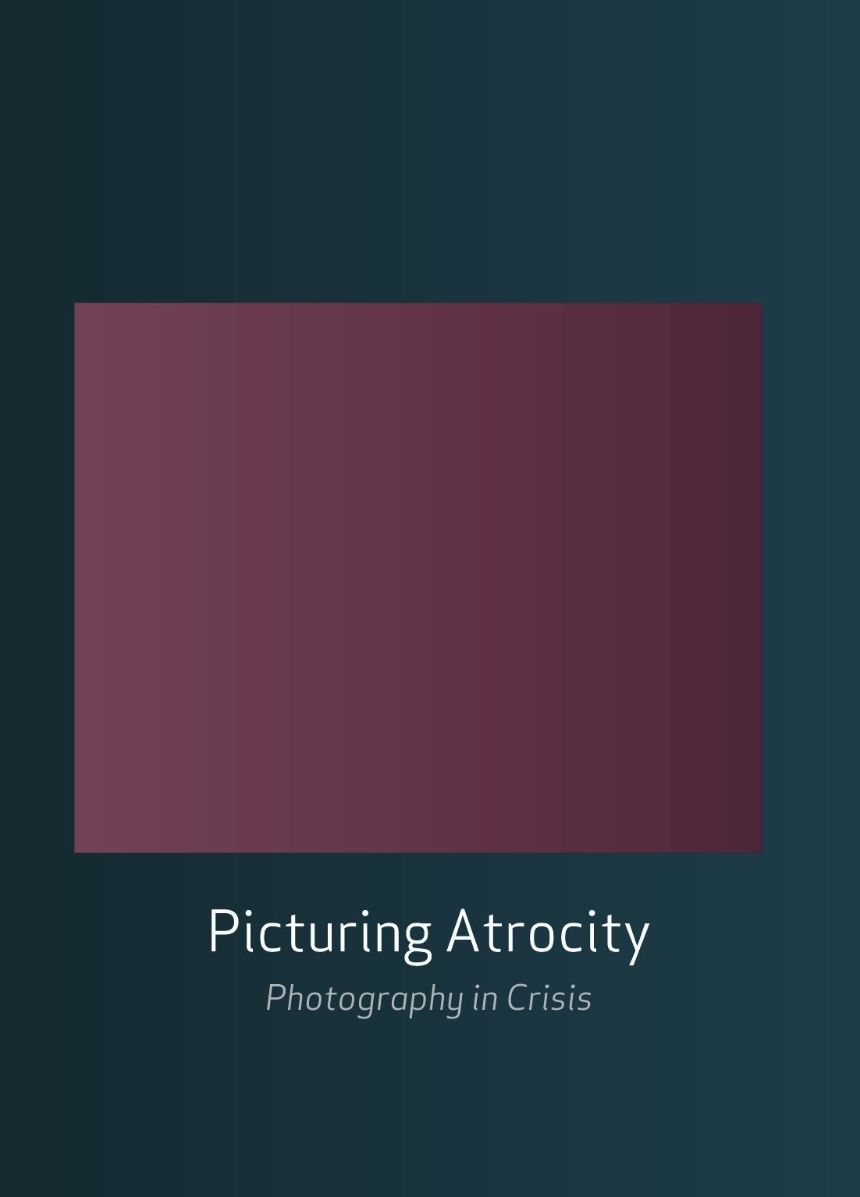Ever since the landmark publication of Susan Sontag’s On Photography, it has been impossible to look at photographs, particularly those of violence and suffering, without questioning our role as photographic voyeur. Are we desensitized by the proliferation of these images, and does this make it easier to be passive and uninvolved? Or do the images immediately stir our own sense of justice and act as a call to arms? Are we consuming the suffering of others as a form of intrigue? Or is it an act of empathy?
To answer these questions, Picturing Atrocity brings together essays from some of the foremost writers and critics on photography today, including Rebecca Solnit, Alfredo Jaar, Ariella Azoulay, Shahidul Alam, John Lucaites, Robert Hariman, and Susan Meiselas, to offer close readings of images that reveal the realities behind the photographs, the subjects, and the photographers. From the massacre of the Sioux Indians at Wounded Knee to the torture of prisoners at Abu Ghraib, from famine in China to apartheid in South Africa, Picturing Atrocity examines a broad spectrum of photographs. Each of the essays focuses specifically on an iconic image, offering a distinct approach and context, in order to enable us to look again—and this time more closely—at the picture. In addition, four photo-essays showcase the work of photographers involved in the making of photographs of brutality as well as the artists’ own reflections on these images.
Together these essays cover the historical and geographical range of atrocity photographs and respond to current concerns about such disturbing images; they probe why we as viewers feel compelled to look even when our instinct might be to look away. Picturing Atrocity is an important read, not just for insights into photography, but for its reflections on human injustice and suffering. In keeping with that aim, all royalties from the book will be donated to Amnesty International.
Reviews
Table of Contents
Introduction
Jay Prosser
1. Response and Responsibility
Words Can Kill: Haiti and the Vocabulary of Disaster
Rebecca Solnit
Visible and Invisible Scars of Wounded Knee
Mick Gidley
Severed Hands: Authenticating atrocity in the Congo, 1904–13
Christina Twomey
Atrocity and Action: The Performative Force of the Abu Ghraib Photographs
Peggy Phelan
2. Becoming Iconic
Photographing Atrocity: Becoming Iconic?
Griselda Pollock
The Iconography of Famine
David Campbell
A Single Image of Famine in China
D. J. Clark
History at a Standstill: Agency and Gender in the Image of Civil Rights
Elizabeth Abel
3. Photographing Atrocity
Body on a Hillside
Susan Meiselas
Crossfire
Shahidul Alam
4. Circulation and Public Culture
The Iconic Image of the Mushroom Cloud and the Cold War Nuclear Optic
Robert Hariman and John Louis Lucaites
The Girl in the Photograph: The Visual Legacies of War
Nancy K. Miller
Atrocity, the "As If," and Impending Death from the Khmer Rouge
Barbie Zelizer
The Falling Man
Tom Junod
5. Ordinary Atrocities
Street Photographs in Crisis: Cernauti, Romania, c. 1943
Marianne Hirsch and Leo Spitzer
Picturing the Perpetrator
Paul Lowe
War Trophy Photographs: Proof or Pornography?
Hilary Roberts
Picturing an "Ordinary Atrocity": The Sharpeville Massacre
Darren Newbury
6. Atrocity Askance
Looking Askance
Geoffrey Batchen
Documentary Pictorial: Luc Delahaye’s Taliban, 2001
Mark Durden
The Execution Portrait
Ariella Azoulay
Toward a Hyperphotography
Fred Ritchin
7. The Afterlife of Photographs
Lament of the Images
Alfredo Jaar and David Levi Strauss
Photographic Interference
Lorie Novak
References
Contributors
Acknowledgments
Photo Acknowledgments
Permissions
Jay Prosser
1. Response and Responsibility
Words Can Kill: Haiti and the Vocabulary of Disaster
Rebecca Solnit
Visible and Invisible Scars of Wounded Knee
Mick Gidley
Severed Hands: Authenticating atrocity in the Congo, 1904–13
Christina Twomey
Atrocity and Action: The Performative Force of the Abu Ghraib Photographs
Peggy Phelan
2. Becoming Iconic
Photographing Atrocity: Becoming Iconic?
Griselda Pollock
The Iconography of Famine
David Campbell
A Single Image of Famine in China
D. J. Clark
History at a Standstill: Agency and Gender in the Image of Civil Rights
Elizabeth Abel
3. Photographing Atrocity
Body on a Hillside
Susan Meiselas
Crossfire
Shahidul Alam
4. Circulation and Public Culture
The Iconic Image of the Mushroom Cloud and the Cold War Nuclear Optic
Robert Hariman and John Louis Lucaites
The Girl in the Photograph: The Visual Legacies of War
Nancy K. Miller
Atrocity, the "As If," and Impending Death from the Khmer Rouge
Barbie Zelizer
The Falling Man
Tom Junod
5. Ordinary Atrocities
Street Photographs in Crisis: Cernauti, Romania, c. 1943
Marianne Hirsch and Leo Spitzer
Picturing the Perpetrator
Paul Lowe
War Trophy Photographs: Proof or Pornography?
Hilary Roberts
Picturing an "Ordinary Atrocity": The Sharpeville Massacre
Darren Newbury
6. Atrocity Askance
Looking Askance
Geoffrey Batchen
Documentary Pictorial: Luc Delahaye’s Taliban, 2001
Mark Durden
The Execution Portrait
Ariella Azoulay
Toward a Hyperphotography
Fred Ritchin
7. The Afterlife of Photographs
Lament of the Images
Alfredo Jaar and David Levi Strauss
Photographic Interference
Lorie Novak
References
Contributors
Acknowledgments
Photo Acknowledgments
Permissions

